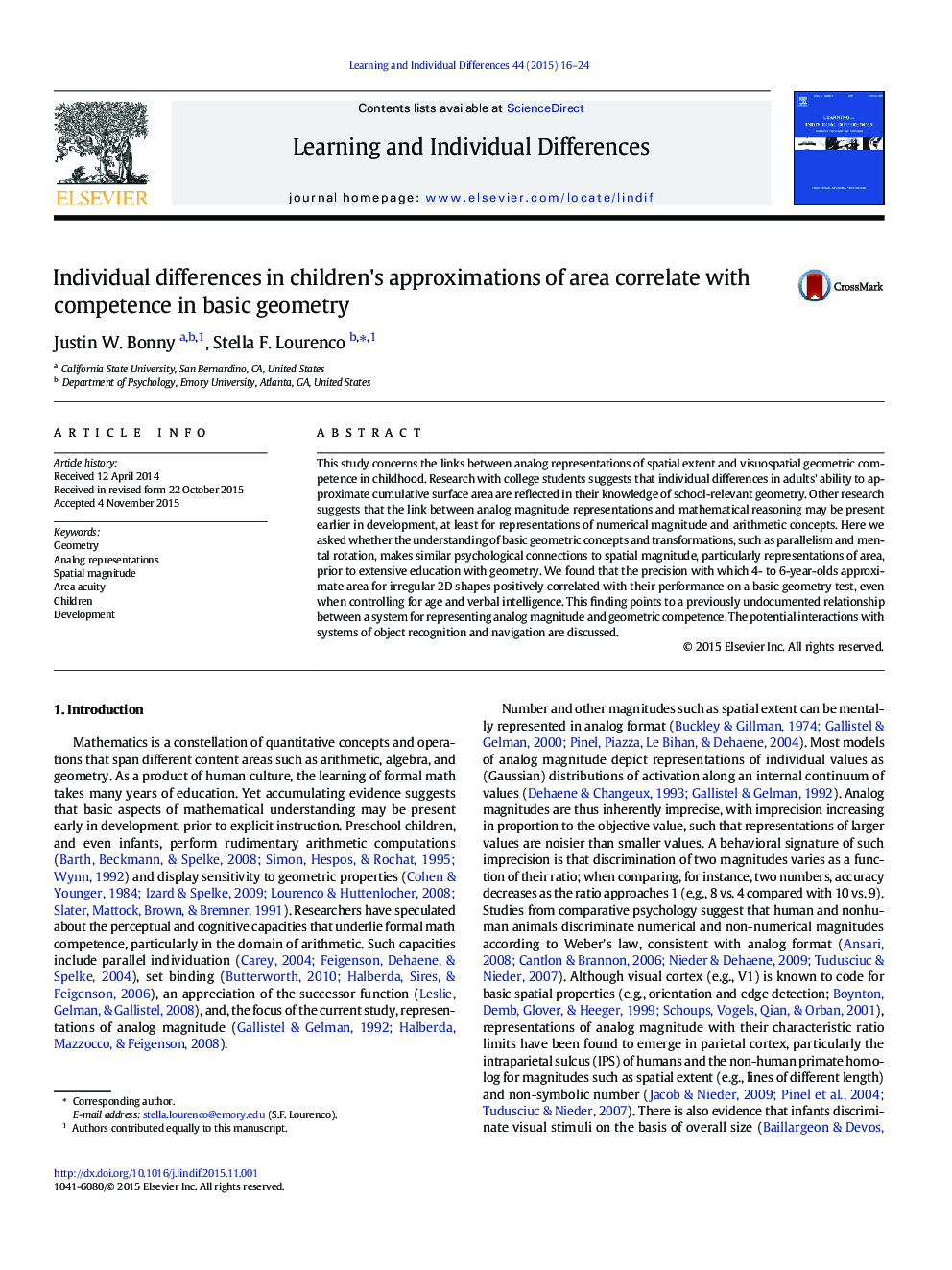| کد مقاله | کد نشریه | سال انتشار | مقاله انگلیسی | نسخه تمام متن |
|---|---|---|---|---|
| 364639 | 621079 | 2015 | 9 صفحه PDF | دانلود رایگان |
• We examined whether children's area precision was related to basic geometry skills.
• Preschoolers completed an area comparison task and basic geometry test.
• Performance on area task correlated with scores on geometry test
• We suggest that area representations interact with core systems of geometry.
This study concerns the links between analog representations of spatial extent and visuospatial geometric competence in childhood. Research with college students suggests that individual differences in adults' ability to approximate cumulative surface area are reflected in their knowledge of school-relevant geometry. Other research suggests that the link between analog magnitude representations and mathematical reasoning may be present earlier in development, at least for representations of numerical magnitude and arithmetic concepts. Here we asked whether the understanding of basic geometric concepts and transformations, such as parallelism and mental rotation, makes similar psychological connections to spatial magnitude, particularly representations of area, prior to extensive education with geometry. We found that the precision with which 4- to 6-year-olds approximate area for irregular 2D shapes positively correlated with their performance on a basic geometry test, even when controlling for age and verbal intelligence. This finding points to a previously undocumented relationship between a system for representing analog magnitude and geometric competence. The potential interactions with systems of object recognition and navigation are discussed.
Journal: Learning and Individual Differences - Volume 44, December 2015, Pages 16–24
